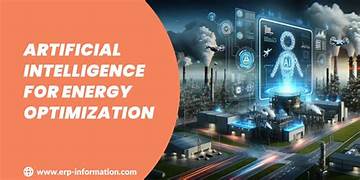AI Applications in Managing and Analyzing Environmental Data
In the quest to address global environmental challenges, managing and analyzing vast amounts of environmental data has become essential. Artificial Intelligence (AI) has emerged as a transformative technology in this realm, enabling more efficient data collection, analysis, and application. AI-powered tools are being utilized across various sectors to improve environmental management, predict changes, and implement sustainable solutions.
The Importance of Environmental Data Management
Environmental data encompasses information related to weather patterns, natural resource usage, pollution levels, biodiversity, and more. Properly managing this data is crucial for understanding and addressing issues such as climate change, habitat loss, and natural disasters. However, the sheer volume and complexity of environmental data require advanced tools for effective handling.
AI facilitates data-driven decision-making by:
- Automating data collection and processing.
- Identifying patterns and trends that may be invisible to human analysts.
- Generating actionable insights to guide policy and business strategies.
AI Applications in Environmental Data Management
1. Remote Sensing and Monitoring
AI algorithms process data collected from satellites, drones, and other remote sensing technologies to monitor environmental changes. For example:
- Deforestation Tracking: AI identifies deforestation activities by analyzing satellite imagery, enabling authorities to take timely action.
- Ocean Health Monitoring: Machine learning models analyze data on water temperature, salinity, and pollution to assess the health of marine ecosystems.
2. Climate Modeling and Forecasting
AI enhances the accuracy of climate models by processing vast datasets, including historical weather data, greenhouse gas concentrations, and ocean currents. Key benefits include:
- Predicting extreme weather events such as hurricanes, droughts, and heatwaves.
- Simulating future climate scenarios to guide mitigation and adaptation efforts.
3. Biodiversity Conservation
AI supports biodiversity monitoring by:
- Identifying species in images and audio recordings using computer vision and natural language processing.
- Predicting the impact of human activities on wildlife populations and habitats.
- Recommending conservation strategies based on predictive analytics.
4. Pollution Monitoring and Control
AI systems detect and monitor pollution levels in air, water, and soil. For instance:
- Sensors equipped with AI analyze air quality in real-time, identifying sources of pollution.
- Machine learning models assess the effectiveness of pollution control measures, optimizing resource allocation.
5. Resource Management
AI optimizes the management of natural resources such as water, energy, and minerals by:
- Predicting demand and supply patterns to minimize waste.
- Enhancing the efficiency of resource extraction and distribution processes.
- Identifying alternative, sustainable resource options.
AI-Powered Tools for Optimizing Energy Consumption in Cities
Cities are hubs of energy consumption, accounting for a significant portion of global energy demand. AI plays a crucial role in optimizing urban energy use, ensuring sustainability, and reducing environmental impact.
1. Smart Grids
AI enhances the operation of smart grids by:
- Balancing energy supply and demand through predictive analytics.
- Integrating renewable energy sources like solar and wind power efficiently.
- Detecting and addressing faults in the grid to minimize downtime.
2. Building Energy Management
AI-powered systems optimize energy use in residential, commercial, and industrial buildings by:
- Monitoring energy consumption in real-time.
- Adjusting heating, cooling, and lighting systems based on occupancy and weather data.
- Predicting maintenance needs to prevent energy wastage.
3. Transportation Systems
AI reduces energy consumption in urban transportation through:
- Optimizing traffic flow with intelligent traffic signal systems.
- Enhancing the efficiency of public transportation networks.
- Supporting the deployment of electric and autonomous vehicles.
4. Renewable Energy Integration
AI facilitates the integration of renewable energy sources into urban energy systems by:
- Forecasting energy generation based on weather conditions.
- Managing energy storage systems to ensure a stable power supply.
- Identifying optimal locations for renewable energy installations.
5. Waste-to-Energy Initiatives
AI supports waste-to-energy projects by:
- Analyzing waste composition to determine energy recovery potential.
- Optimizing waste collection and processing routes.
- Enhancing the efficiency of energy conversion technologies.
Challenges and Opportunities
While AI offers immense potential in optimizing urban energy consumption, challenges persist:
1. Data Availability and Quality
Reliable data is essential for training AI models. Gaps or inaccuracies in data can hinder the effectiveness of AI solutions.
2. Infrastructure Requirements
Implementing AI-driven energy systems requires substantial investment in technology and infrastructure, which may be a barrier for some cities.
3. Regulatory and Ethical Concerns
AI applications must comply with regulations and address ethical concerns, such as data privacy and algorithmic fairness.
4. Collaboration and Integration
Successful implementation requires collaboration among stakeholders, including governments, businesses, and communities. Integrating AI tools with existing systems can also be complex.
The Future of AI in Urban Energy Management
The integration of AI in urban energy systems is set to expand, driven by technological advancements and the push for sustainability. Future developments may include:
1. Decentralized Energy Systems
AI will enable cities to adopt decentralized energy systems, where households and businesses generate and share renewable energy.
2. Personalized Energy Solutions
AI could provide tailored energy-saving recommendations for individuals and organizations based on their consumption patterns.
3. Advanced Energy Storage
AI will improve the efficiency and reliability of energy storage technologies, such as batteries and hydrogen fuel cells.
4. AI-Driven Urban Planning
AI will guide urban planning efforts to create energy-efficient cities, optimizing land use, transportation networks, and building designs.
Conclusion
AI is transforming the way cities manage energy, offering innovative solutions to optimize consumption, reduce costs, and enhance sustainability. By harnessing the power of AI, urban areas can become smarter, greener, and more resilient, paving the way for a sustainable future. Continued innovation and collaboration will be key to unlocking the full potential of AI in urban energy management.


